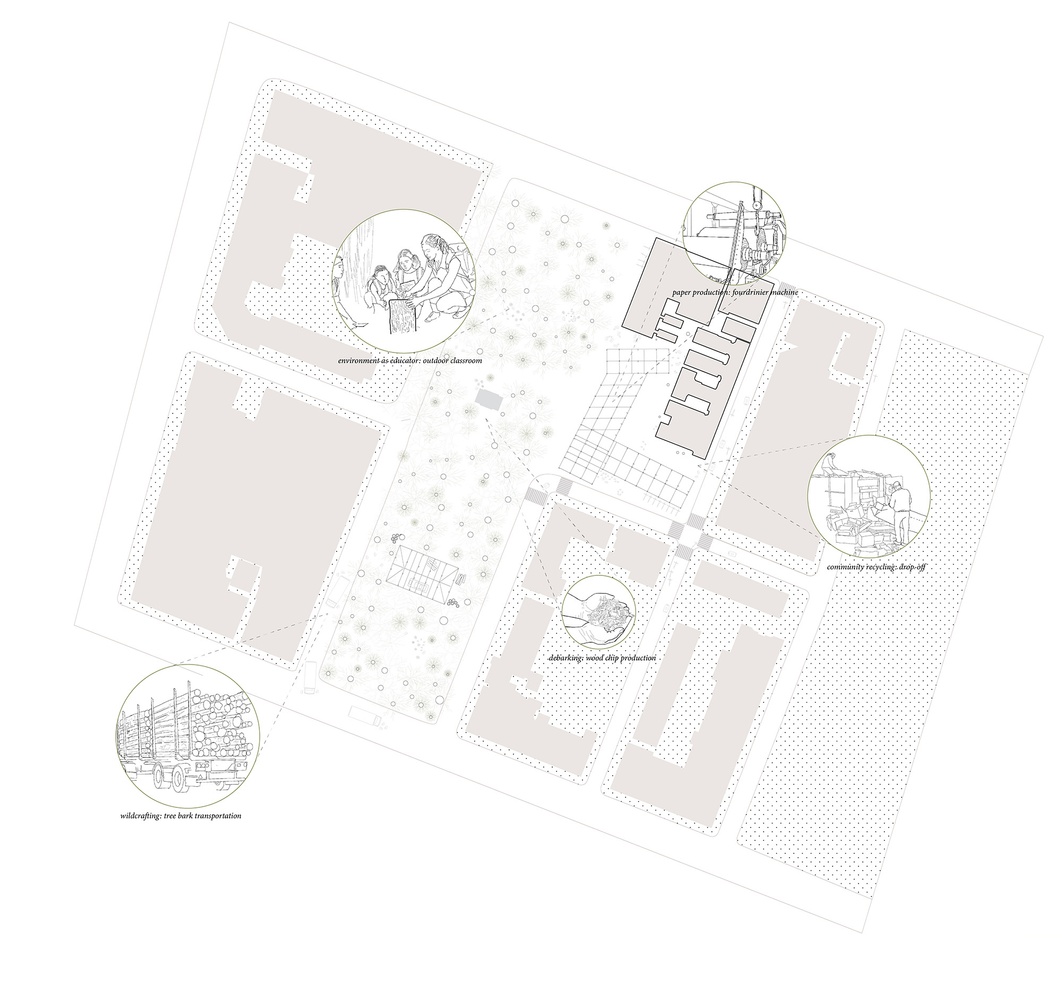This project reimagines the school as a stack of paper: an imagination of post-carbon education that informs the structure, tectonics, and pedagogy of a school that operates from a spirit of sharing. Physical material and knowledge are considered a vital and interrelated commons, built and layered through time, reconfiguring the objects and bodies that we consider archives.
Paper is deployed through the glulam spaceframe in accordance with the programmatic requirements of the public school, as cladding, shading, partition, insulation, and circulating material. Additionally, the basement of the school and the adjacent Sara Roosevelt Park are conceived of as part of a larger paper-making production facility, whose output is used both for and in the school. This additional program ensures that paper production and consumption are localized in a circular economy that expands beyond the footprint of the school building. The school’s structure, both physical and organizational, is intrinsically connected to the extended LES community: it relies on volunteers to run the paper-making facility, maintain the school building, and in turn, supply an abundance of recyclable, used paper products.
Failure is built into the expectations of this system, and in turn, the structure demands care, replenishment, and maintenance, values that are core to the school curriculum. Paper is knowledge materialized, and this paper-school centers on an embodied pedagogy and learning/living process, connecting students to material, space, production, and labor to develop an acute, embodied consciousness of what it means to inhabit the space and body of a learner and a knowledge-maker.









